Strength is strength. Fortunately, there’s a lot more to it than that. Human beings have competed in tests of strength since, essentially, the dawn of time. From crude rock-lifting competitions to the Olympic Games, strength has been systematized, economized, and categorized.
Two of the most prominent disciplines in the world of strength are powerlifting and weightlifting. You might’ve heard of them before; heck, you, like many others, have probably confused them in the past. Hopefully, you’re interested in diving into one (or both) of them yourself.

But before you choose a strength sport to pursue, you need to know how powerlifting and weightlifting are alike and, especially, how they differ.
What Is Powerlifting?
Broadly speaking, strength sports are defined by the specific exercises athletes perform in a competitive setting. In the sport of powerlifting, athletes compete in the barbell back squat, bench press, and deadlift, in that order (more on that later).
The primary goal of the powerlifter is to lift as much weight as possible for a single repetition in all three movements.
The Back Squat
The back squat is the first competitive event at almost all powerlifting competitions — often called meets — and sets the tone for the entire event. Squatting is an expression of bodily coordination and leg strength above all.
Different powerlifting organizations have their own unique rule sets for the back squat. The universal criterion that separates a valid competition squat from an invalid lift is depth. For a lift to “count” in a powerlifting meet, the athlete must sit down low enough such that the crease of their hip falls below their kneecap.
The Bench Press
Powerlifters rely on the barbell bench press as a test of their upper-body strength. In competition, powerlifters bench in between their squat and deadlift as a way of giving their legs time to recover, as the squat and deadlift work many of the same muscles.
The criteria that validate a bench press in a competitive setting can vary wildly between different powerlifting federations. However, almost all powerlifting meets require the athlete to bring the barbell to a brief pause on their chest before returning it to arm’s length.
The Deadlift
The third and final competition movement in powerlifting is the deadlift. While deadlifts are considered a lower-body movement, heavy barbell deadlifts tax almost every muscle in the body to some degree.

The criteria for a powerlifting deadlift is simple; stand up with the barbell in your hands. You can perform this in any manner you wish, but almost all powerlifters will opt to deadlift with either a conventional or sumo stance. During the conventional deadlift, powerlifters pull with their feet close together. Sumo deadlifters place their feet out in a very wide stance.
What Is Weightlifting?
If the squat, bench press, or deadlift aren’t your jam, you might be more inclined to partake in the sport of weightlifting instead. Despite its very broad name, weightlifting is a highly specific strength sport that tests maximal strength in only two movements. Weightlifting, unlike powerlifting (or any other resistance-training-based sport), is also a recognized Olympic discipline.
The Snatch
The sport of weightlifting highlights flexibility, coordination, and explosive power above all else. These qualities are, perhaps, best exemplified by the snatch.
During the snatch portion of a weightlifting competition, athletes have three chances to vault a loaded barbell over their heads in one swift motion while simultaneously dropping down to “catch” it in a low squat position.
The snatch has a long list of technical rules, but the primary requirement of the lift is that the barbell does not stop moving once the athlete lifts it off the floor. Weightlifters typically complete their snatch attempts in the span of just a few seconds.
The Clean & Jerk
The clean & jerk shares many of the same qualities as the snatch. Weightlifters are tasked with lifting the barbell from the floor to overhead. However, in contrast to the snatch, the clean & jerk allows for the athlete to pause with the barbell on their shoulders.
As such, weightlifters perform the clean & jerk in two distinct phases. First, they pull the barbell off the floor and launch it onto their shoulders, catching it in a front squat position. That’s the clean. Then, they stand upright and push it from their shoulders to arm’s length overhead; the jerk.
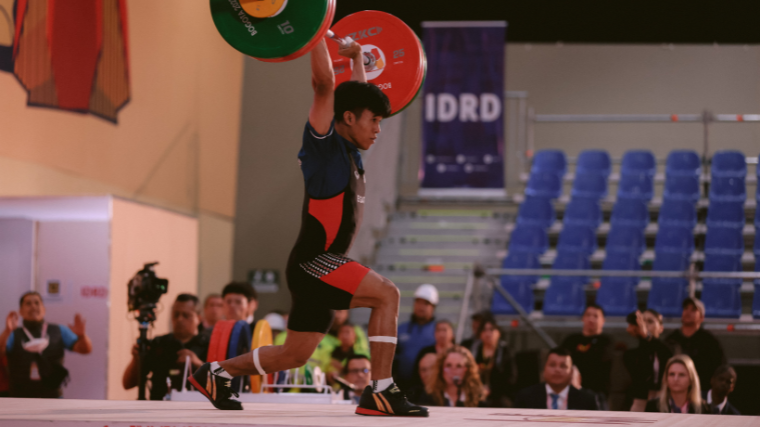
Most weightlifters perform the clean in a similar manner, but you’ll often see a variety of different technical approaches to the jerk. Some athletes will use the split jerk, dropping into a tall lunge position to catch the bar overhead.
Others prefer to do power jerks, in which they catch the bar in a high squat position. In some cases, weightlifters will push the bar off their shoulders and then drop into an overhead squat to catch it, which is known as a squat jerk.
Differences Between Powerlifting and Weightlifting
You can think of powerlifting and weightlifting as close cousins. The pursuit of both sports is the same — lift as much weight as possible as an expression of strength. The methods and metrics by which each sport operates in service of that goal vary tremendously.
Here’s what separates powerlifting from weightlifting.
Movements Tested
The sport of powerlifting tests an athlete’s maximal strength through the performance of a single repetition in the barbell back squat, bench press, and deadlift. Weightlifters, on the other hand, perform the barbell snatch and clean & jerk in competition.
How They’re Similar
Both sports allow the athlete three attempts to lift the heaviest weight in each discipline. Powerlifters perform nine total lifts on the platform; weightlifters have six chances.
Both sports also measure the athletes by their “Total,” which is the sum of their heaviest valid attempt in each discipline. The winner of each weight class (powerlifting and weightlifting each have their own body weight categories) is determined by who has the highest cumulative Total. However, both sports award lift-specific medals as well.
Athletic Qualities
The two sports have somewhat mismatched names. Despite its namesake, powerlifting is less about explosive force generation and more about raw strength; how fast you lift the weight isn’t necessarily important.
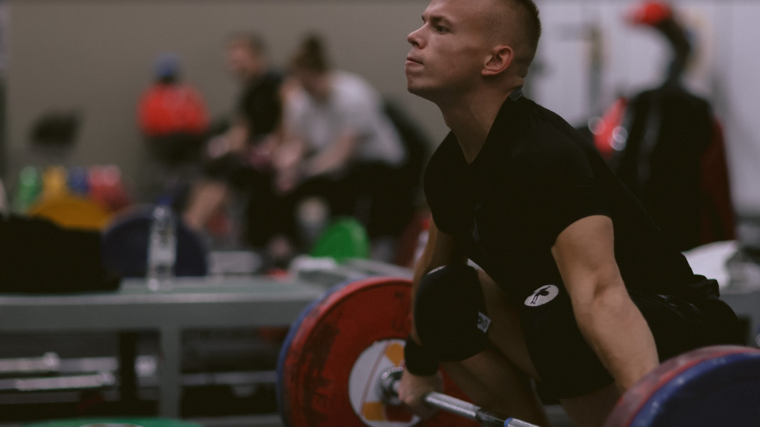
For the weightlifter, explosiveness is integral, as the barbell must physically fly through the air as the athlete moves around and underneath it. This is a common point of confusion for newcomers, as powerlifting is about lifting the weight — weightlifting requires you to lift powerfully.
How They’re Similar
Despite the clunky naming conventions, both powerlifters and weightlifters rely on similar athletic qualities. Both athletes need a tremendous reserve of strength in their legs and backs, as well as a strong grip to boot.
Powerlifters need strong arms to bench press, and the same holds true for weightlifters who must suspend their barbell overhead. However, direct arm training isn’t particularly essential to success in either sport.
Training Style
The powerlifter and the weightlifter take vastly different approaches to their out-of-competition training, even though both sports test maximal strength. Powerlifting training is discrete and controlled; athletes spend the majority of their time performing the squat, bench press, or deadlift, similarly to how they’d lift in a competitive setting.
Weightlifting training is more robust and varied by comparison. Weightlifters will perform heavy snatches or clean & jerks in close proximity to an upcoming meet, but much of their out-of-competition training involves variations on the “classic” lifts as well as plenty of supplemental exercises.
Weightlifters also tend to do more mobility-focused exercise, as the snatch and clean & jerk require exceptional flexibility in the ankles, hips, shoulders, and thoracic spine. This isn’t to say that powerlifters are inflexible — they just don’t need as much mobility in as many places at all times.
How They’re Similar
Despite competing in very different exercises, powerlifters and weightlifters take a broadly similar approach to training for strength. Both sports adopt the same general philosophy: The closer you are to a competition, the more your workouts should resemble what you’ll do in that competition.
For the powerlifter, this means regularly performing sets of one to three repetitions in the squat, bench, and deadlift, closely mimicking a competitive setting. Weightlifters do the same with plenty of heavy “singles” (one rep) or “doubles” (two reps) in the snatch or clean & jerk.
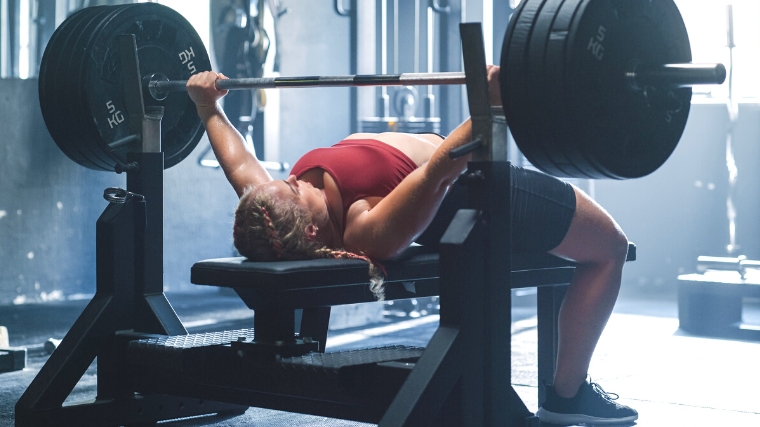
If there are no upcoming meets on the horizon, both powerlifters and weightlifters will use that time to incorporate more diverse exercises, work on their strength-related or technical weaknesses, and train at lower intensities.
Competition Structure
Powerlifting and weightlifting federations each take different approaches to how they structure their competitions. Prior to any lifting, each sport requires its athletes to “weigh in” and validate that they’re at a weight that aligns with their class. Weightlifting meets require competitors to weigh in exactly two hours prior to the commencement of the event, but powerlifting meets vary in this regard.
Competitive Attempts
Each sport lays out different rules regarding how its competitors organize their attempts. Powerlifters are grouped into flights for each of the three lifts, based on their relative strength and the weight they want to lift. Flights ensure that powerlifters are given ample time to rest between their attempts, making the sequence of lifts consistent and predictable.
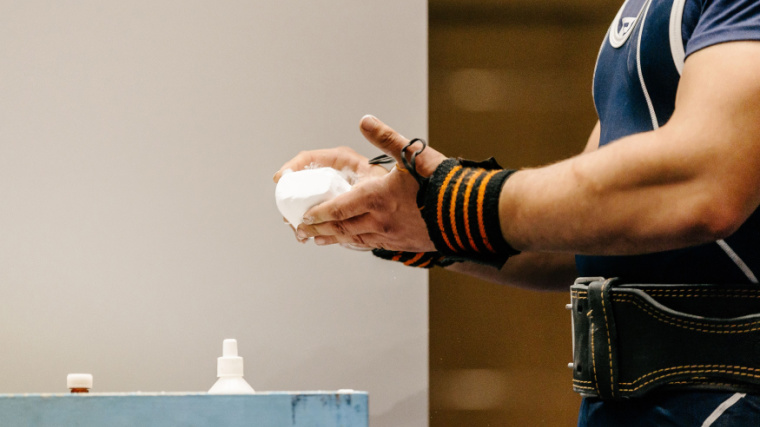
Weightlifting, on the other hand, is more volatile. Competitors declare their first weight in either the snatch or clean & jerk ahead of time, but will choose their subsequent weights depending on what their competitors attempt. These battles make the sessions fluid, with plenty of last-minute adjustments to the order in which the competitors appear on stage.
How They’re Similar
Both sports adopt different parameters about how their competitors approach attempt selection. That said, both powerlifting and weightlifting follow a “rising bar” philosophy. Meaning that, over the course of a competitive session, the weight on the bar must increase. The strongest athletes in a given session appear at the end, while those with less strength start things off.
Governance & Regulations
Powerlifting and weightlifting differ in bureaucratic structure perhaps more than any other way. The sport of weightlifting is entirely centralized; all international competitions are organized by the International Weightlifting Federation (IWF). This standardizes the rules of the sport on the world stage and many individual member federations (such as USA Weightlifting) opt to replicate the IWF’s rules and policies.
Conversely, powerlifting is decentralized — even within individual countries. While the International Powerlifting Federation (IPF) is regarded as the dominant governing body for the sport on the world stage, there are dozens of other federations that operate successful meets, each with its own rules, regulations, and even weight classes.
How They’re Similar
Despite having vastly different approaches to organization and policy, both powerlifting and weightlifting opt to regulate their competitions in pursuit of fairness. For example, both sports limit what assistive equipment is permitted in competition.
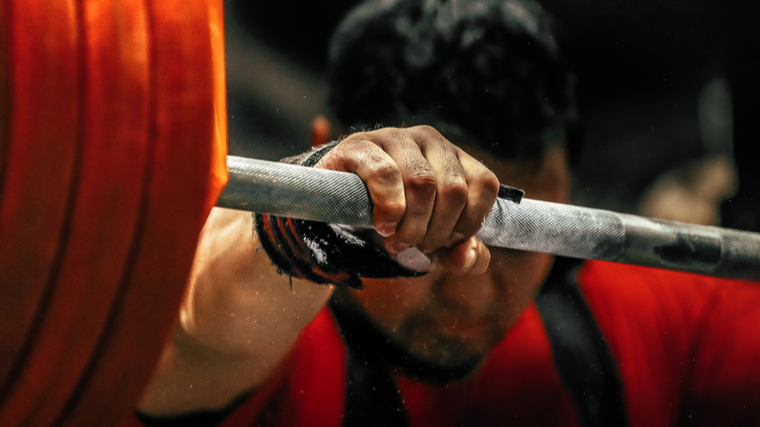
Powerlifting employs different competitive divisions based around lifting equipment — “raw” divisions tend to forbid anything beyond a lifting belt and knee or wrist support. Weightlifting doesn’t make any equipment-based distinctions but does ban certain types of equipment deemed too assistive.
What You Need to Know
Powerlifting and weightlifting are two distinct sports that share many qualities, but the devil is in the details. Here’s a broad overview of the two sports:
- Powerlifting is a strength sport that tests maximal strength in the barbell bench press, back squat, and deadlift. Athletes have three attempts to lift the heaviest weight possible in all three movements for a single repetition.
- Weightlifting tests maximal strength in two movements: The snatch and the clean & jerk. Weightlifters also get three chances to lift the heaviest weight in each.
- Both sports rank competitors by Total, which is the sum of an athlete’s best result in all disciplines. Athletes receive separate awards for their performances in each movement.
- Both sports arrange their competitors by sex and weight class so athletes of similar stature can compete fairly against each other.
Powerlifting Weight Classes
Note: Some powerlifting federations have different weight classes. These are the IPF’s competitive weight categories.
Women
- 47 kilograms
- 52 kilograms
- 57 kilograms
- 63 kilograms
- 69 kilograms
- 76 kilograms
- 84 kilograms
- 84+ kilograms
Men
- 59 kilograms
- 66 kilograms
- 74 kilograms
- 83 kilograms
- 93 kilograms
- 105 kilograms
- 120 kilograms
- 120+ kilograms
Weightlifting Weight Classes
These are the IWF’s official weight classes. National member federations follow the IWF’s lead regarding competitive body weight categories.
Women
- 45 kilograms
- 49 kilograms
- 55 kilograms
- 59 kilograms
- 64 kilograms
- 71 kilograms
- 76 kilograms
- 81 kilograms
- 87 kilograms
- 87+ kilograms
Men
- 55 kilograms
- 61 kilograms
- 67 kilograms
- 73 kilograms
- 81 kilograms
- 89 kilograms
- 96 kilograms
- 102 kilograms
- 109 kilograms
- 109+ kilograms
What You Need to Start Powerlifting
Powerlifting is a fantastic grab-and-go option if you’re interested in training for, and competing in, strength. You can train like a powerlifter in most gyms, the movements themselves are relatively straightforward, and the strength you develop will carry over to other areas of your life.
In order to complete a powerlifting program, you’ll need access to:
- A full-length, 20-kilogram or 45-pound barbell.
- Sufficient full-size weight plates.
- A squat or power rack.
- A bench press station.
These are the bare essentials, but many powerlifting programs include a host of different accessory exercises. Resistance bands, cables, bumper plates, and even exercise machines will all enhance your quality of life as a powerlifter.
What You Need to Start Weightlifting
Despite being an Olympic sport, weightlifting is a relatively niche pursuit, especially at the hobbyist level. To practice weightlifting, you really only need three items. However, many accessibility issues revolve around finding a place to train. Here’s what you need to have if you want to start weightlifting:
- A gender-appropriate barbell. Men work with 20-kilogram bars, while women use shorter and thinner 15-kilogram bars.
- An assortment of bumper plates. Weightlifters drop their barbell from overhead, so you must utilize rubberized plates.
- A pair of weightlifting shoes designed to augment your performance in the snatch and clean & jerk.
- A home gym or commercial facility with sufficient ceiling height to accommodate overhead lifting.
Many recreational weightlifters will practice their sport in CrossFit gyms, as CrossFit borrows heavily from Olympic lifting for its workouts and thus carries all of the essential equipment. Other free weights, cables, or machines are nice to have, but only see use for accessory training.
Find Your Strength
Powerlifting and weightlifting both have their places. Each sport has its own sect of devoted fans, but neither is superior to the other. They test different movements in different conditions under different rulesets.
Plenty of people bounce back and forth between the sports and for good reason — powerlifting and weightlifting both have a lot to offer you. They can make you stronger, of course, but you’ll also learn a lot about yourself as an individual. The barbell is the great equalizer. It is always honest with you. In that way, powerlifting and weightlifting are therapeutic and deeply fulfilling.
Featured Image: William Johnson / BarbellStories